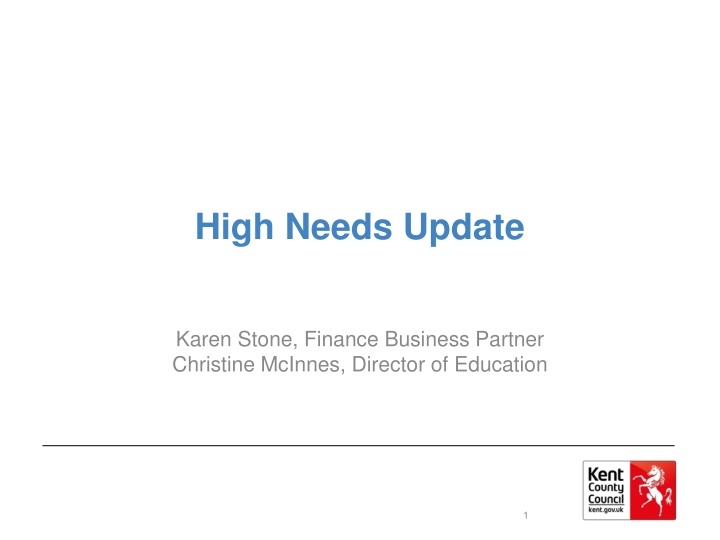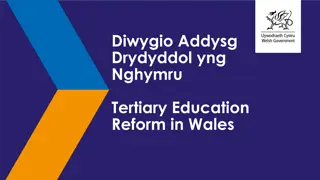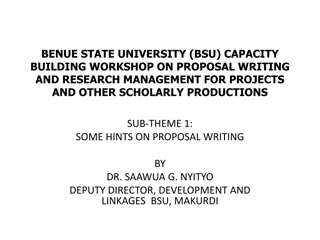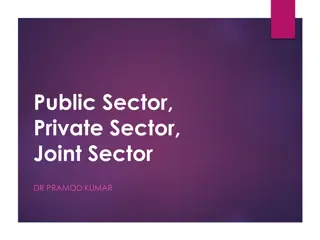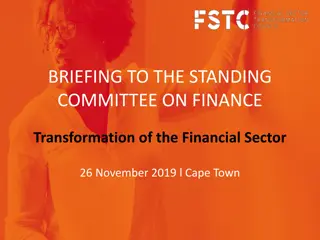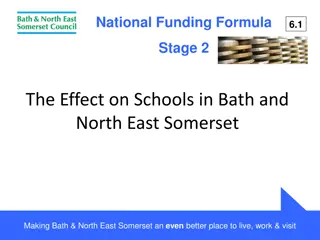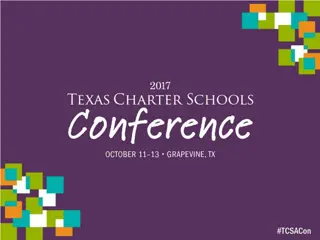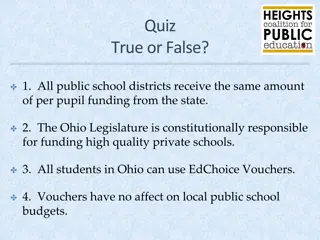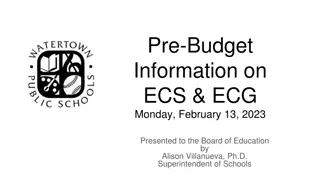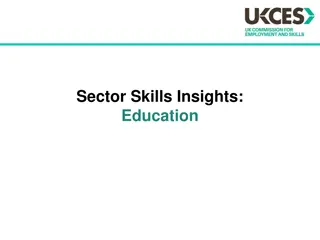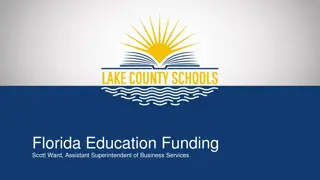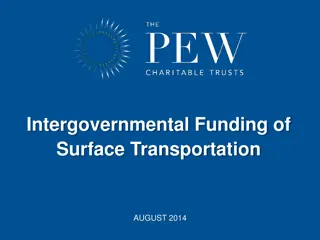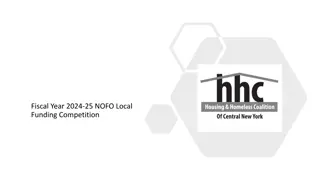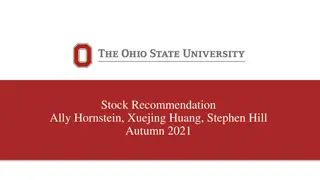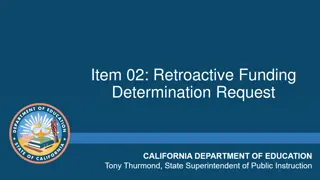Analysis of High Needs Funding in Education Sector
This detailed report provides updates on high needs funding in the education sector, including forecasts, deficits, reserves, and impacts on related council budgets. It covers statistics, comparisons with national data, and information on average deficits or surpluses. The analysis delves into funding allocations for special schools, SEN services, and more, highlighting areas of overspend and deficits that need attention.
Download Presentation

Please find below an Image/Link to download the presentation.
The content on the website is provided AS IS for your information and personal use only. It may not be sold, licensed, or shared on other websites without obtaining consent from the author.If you encounter any issues during the download, it is possible that the publisher has removed the file from their server.
You are allowed to download the files provided on this website for personal or commercial use, subject to the condition that they are used lawfully. All files are the property of their respective owners.
The content on the website is provided AS IS for your information and personal use only. It may not be sold, licensed, or shared on other websites without obtaining consent from the author.
E N D
Presentation Transcript
High Needs Update Karen Stone, Finance Business Partner Christine McInnes, Director of Education 1
High Needs Block Forecast Update No changes to the forecast for 21-22 21-22 funding includes grant 248m & 10m block transfer Total spend 296m includes 2m inclusion fund Overspend on High Needs: 38m but includes underspend on inclusion fund activities 8m without transfer 46m overspend (19%) 100m accumulated deficit (40%) Impact on overall Dedicated Schools Reserve: DSG Block 31 Mar 21 ms 31 Mar 22 ms + Deficit - Surplus School -10.9 0.0 TTO settlement as agreed with SFF High Needs +61.5 +99.5 Recovery unlikely to impact until 22-23 Early Years +0.5 +1.5 Pressure on free entitlement payments likely to continue Central 0.0 0.0 Underspends support offset High Needs DSG Deficit 51.1 101.0 2
DSG In-Year Position Block 2018-19 ms 2019-20 ms 2020-21 ms 2021-22 ms High Needs Block 6.7 20.8 31.8 38.0 Schools block -3.0 -5.2 -2.6 10.9 (TTO) Early Years block 0.7 -0.7 0.4 1.0 Central block In-year Surplus (-) or Deficit (+) 4.4 15.0 29.5 50.4 2017-18 B/fwd 2.2 Cumulative Deficit at year end 6.5 21.5 51.0 101.0 School to HN transfer 4.4 9.2 9.8 10.0 3
Impact on Related Council Budgets Council Funded Services (Council Tax) Not all services for SEN are funded from Dedicated Schools Grant 18-19 ms 19-20 ms 20-21 ms 21-22 ms SEN Transport 30.2 34.6 28.6 41.8 SEN Services 2.0 5.1 6.0 6.9 Education Psychology 2.8 2.8 4.0 4.8 Capital Grants: Increasing Places DFE funding for 2 new Special Schools Insufficient Basic need High Needs Capital Funding Between 18-19 and 21-22 26m spend compared to grant of 17.5m 4
DSG Deficit Average Deficit (+) or Surplus (-) ms England Statistical Neighbours SE Region Kent DSG Cumulative Defict or Surplus as % of High Needs Budget No Deficit Less than 10% 10-20% 20-30% 30-40% over 40% N/A Number of LA Latest Published National Data relates to 19-20 showed around 2/3rds of all LA are in Deficit. Proportion of HNB. 55 36 26 17 4 11 2 151 Reserve Balance as a % of HNB 7.6% -2.0% 10.8% 10.5% Average HNB ms 3.2 -1.6 5.0 21.5 42.1 79.5 46.0 204.0 no of LAs F40 recent study 77 LA s responded Order in size of overall deficit Statistical Neighbour deficit <19.99% 20% - 39.99% 40% - 59.99% 60% - 79.99% 80% - 99.99% >100% 38 24 8 2 1 3 76 Not in deficit 40m deficit 10m deficit 30m deficit 20m deficit 80m deficit 50m deficit 6 0m deficit
EHCPs 0-25 year olds Total number of EHCPs (0-25 year olds) per 1000 of 0-18 population 50.0 45.6 45.0 12% 40.7 40.0 37.2 36.0 35.0 10% 34.0 33.1 31.1 7% 30.9 30.5 30.0 29.3 28.3 27.1 25.7 25.6 24.8 25.0 Total number of EHCPs (0 -25 yrs) in Kent 23.1 22.2 22.9 last 3 yrs Increase last 5 yrs Increase 117% 105% 20.0 2016 7,045 22.2 2017 8,199 25.6 2018 9,862 30.5 2019 11,763 36.0 2020 13,499 40.7 2021 15,281 45.6 Total number per 1,000 of 0-18 population 55% 50% 15.0 2016 2017 2018 2019 2020 2021 England Kent SEN Region (excl KCC) Stat Neighbours (excl KCC) 7
EHCPs 0-19 year olds Number of EHCPs for 0-19 year olds per 1,000 of 0-18 population 45.0 40.9 11% 40.0 37.0 35.0 34.7 33.2 9% 31.8 31.2 30.0 7% 29.5 29.0 28.5 27.8 27.1 25.8 25.0 25.0 24.7 24.3 23.0 22.1 22.8 Total number of EHCPs (0 -19 yrs) in Kent last 3 yrs Increase last 5 yrs Increase 20.0 2016 7,020 22.1 2017 7,896 24.7 2018 9,217 28.5 2019 10,847 33.2 2020 12,242 37.0 2021 13,709 40.9 Total number per 1,000 of 0-18 population 49% 44% 95% 85% 15.0 2016 2017 2018 2019 2020 2021 England Kent SE Region (excl Kent) Statisical Neighbours 8
EHCP Placements Placement of children with an EHCP (aged up to 25) per 1000 of the 2-18 population (Jan 2021 SEN data) 16.0 15.2 14.0 12.7 12.3 11.9 12.0 11.4 11.0 10.5 10.3 10.0 8.8 8.0 6.6 6.2 6.0 5.3 4.2 3.6 3.6 4.0 3.0 2.9 2.5 2.4 2.3 2.2 2.1 1.8 2.0 0.9 0.0 Mainstream Resource Provisions Special I&NMS Post 16 Other England Kent SE Region (excl Kent) Stat Neighbours 9
EHCPs in Mainstream Placement of children with EHCP in Mainstream per 1,000 of the 0 - 18 population 15.0 13.0 12.7 12% 12.2 11.7 11.3 11.0 6% 11.3 11.0 10.7 10.6 10.3 10.3 12% 9.6 9.6 9.3 9.2 9.0 8.3 7.4 7.0 6.9 Total number of EHCPs Supported in Mainstream in Kent 6.2 last 3 yrs Increase last 5 yrs Increase last 5 yrs Increase -100% 2016 1,965 2017 1,160 2018 2,389 2019 2,713 2020 3,048 2021 3,442 10.3 5.0 Total number per 1,000 of 0-18 population 44% 39% 75% 66% 6.2 6.9 7.4 8.3 9.2 66% 3.0 2016 2017 2018 2019 2020 2021 England Kent SE Region (excl Kent) Stat Neighbours 10
EHCPs in SRPs Placement of children with EHCP in Resource Provisions or Units per 1,000 of the 0 - 18 population 4.0 12% 3.6 3.5 3.2 3.1 3.0 2.5 2.4 2.3 2.2 2.2 2.0 2.0 2.0 1.8 1.8 1.7 1.6 1.6 1.6 12% 1.6 1.5 1.4 1.3 1.3 8% 1.2 1.2 1.1 1.1 1.0 Total number of EHCPs Supported in SRPs in Kent 0.9 last 3 yrs Increase last 5 yrs Increase 0.5 2016 2017 1,793 2018 2019 2020 1,069 2021 1,198 Total number per 1,000 of 0-18 population 705 2.2 777 2.4 998 3.1 54% 49% 70% 61% 2.3 3.2 3.6 0.0 2016 2017 2018 2019 2020 2021 England Kent SE Region (excl Kent) Stat Neighbours 11
EHCPs in Special & Independent Placement of children with EHCP in Specialist Provision per 1,000 of the 2 - 18 population 22.0 20.0 9% 19.4 18.0 17.8 16.0 15.6 3% 14.0 14.0 13.7 13.6 5% 13.0 13.0 12.3 12.4 12.3 12.0 12.0 11.5 11.5 11.5 11.0 10.9 10.5 10.0 Total number of EHCPs Supported in Specialist Provision in Kent last 3 yrs Increase last 5 yrs Increase 2016 3,790 12.0 2017 3,693 11.5 2018 3,986 12.3 2019 5,093 12.3 2020 5,904 15.6 2021 6,495 17.8 8.0 Total number per 1,000 of 0-18 population 63% 44% 71% 49% 6.0 2016 2017 2018 2019 2020 2021 England Kent SE Region Stat Neighbours 12
DSG Deficit Recovery Plan: Background Information Karen Stone, Interim Finance Business Partner 13
DFE & MHCLG Guidance: DSG Deficits Legislation was changed so Councils must: Carry all DSG deficits forward to set against the schools budget in the next financial year; or future years (where that is not possible). Not use general funds to eliminate any part of the deficit, or top up its schools budget, without express consent of the Secretary of State Where a council is facing cashflow problems as a result of holding the accumulative deficit within their overall reserves, the DFE will consider applications for forward funding future DSG allocations. Further legislative change: Statutory Override Introduced following concerns raised by auditors Councils will move the DSG deficit into an unusable reserve however, the deficit will still remain within the councils overall finances. will apply for the next 3 financial years covering 2020-21, 2021-22 and 2022-23. There is no further information on what will happen after March 2023. Therefore the DSG deficit will become part of Council s accounts. 14
DFE Guidance: DSG Deficit Plans The Council must: Provide information as and requested by the department abouts its plans for managing its DSG account provide information as and when requested by the department about pressures and potential savings meet with officials of the department as and when requested to discuss the local authority plans and financial situation keep the schools forum regularly updated about the local authority s DSG account and future plans including HN pressures and savings It is expected the plans should set out how to bringing the DSG spend back into balance Where there is a substantial in-year overspend or cumulative DSG deficit balance at the end of the financial year, its management plan should look to bring the overall DSG account into balance within a timely period (where possible) The plan needs to focus on bringing the in-year spending in line with in-year funding. The department will need convincing an LA is unable to pay off its deficit over a period of time. Funding to pay historical deficits will only be considered if the LA eliminates in- year deficit. 15
DFE Guidance: Safety Valve Agreements The DFE have published summarised details of 5 agreements made with Local Authorities with the highest deficits: Local Authority High Needs Block 20-21 ms Accumulated High Needs Deficit 20- 21 ms Extra Funding from DFE by 24-25 ms Bury 33m 25.5m (77%) 20m Hammersmith and Fulham 25m 22.9m (91%) 20m Kingston upon Thames 25m 25.1m (100%) 27m + 3m Richmond upon Thames 27m 17.6m (65%) 20m Stoke-on-Trent 37m 25.5m (68%) 10m Kent 221m 50m (22%) N/A Quarterly returns required on progress Annual review Payments are in instalments subject to sufficient progression Subject to that assessment, the SEN Capital plans will be reviewed separately and Department will consider making a capital contribution to these plans 16
DFE Learning: Safety Valve Agreements DfE have also published a summary of key learning from meeting with LAs: 1. Early intervention, providing proactive support for children and young people is critical for ensuring needs are met and do not escalate unnecessarily Increased SEN support offer, or those without an EHCP, can reduce escalation of need and mean that the level of requests for EHCPs is also reduced. Needs appropriate parental engagement. 2. 3. Review the EHCP assessment processes and thresholds in order that LAs could better deal with requests for EHCPs and consider a thorough review of EHCP cessations through a well-functioning annual review process, which should ensure EHCPs are fairly assessed for continued relevance and need. Culture change and work with school leaders to create a shared goal for children and young people with SEND by creating a more inclusive culture across their whole authority. Engaged with SFF, the parent carer forum and practitioners, such as SENCOs. 4. Appropriate and thorough provision mapping, with potential development of more local provision to avoid over-reliance on independent or distant placements including appropriate use of capital funding. 5. 6. Education and finance leadership worked collaboratively on their plans to reach an in-year balance which were both viable and ambitious. 17
DFE Guidance: Safety Valve Agreements Similar actions are taken across Deficit Recovery Plans: Strengthen their EHCP assessment process including clarifying assessment thresholds for EHCPs Ensure robust planning for future provision: reducing independent school placements by increasing the availability and suitability of local provision Reviewing transition arrangements for children and young people Support and drive schools to meet a higher level of need in a more cost effective way within mainstream settings, while maintaining the quality of provision. Develop a culture in which demand is more effectively managed throughout the authority. Increase early intervention activity to reduce escalation of need to Education Health and Care Plan (EHCP) level Development of a more robust local offer Improve support available in schools to manage demand more effectively and reduce escalation of need Review and reform of the Alternative Provision (AP) model and funding to create efficiencies Review and reform of outreach services to create savings from 2021-22. Reform of the authority s post-16 offer, including but not limited to development of new provision Review and reform early years pathways, including implementing a new early years offer Improve financial planning and collaboration with other funding streams. Developing a model for forecasting future needs Improve quality and timeliness of management information to evaluate impact of central services. Ensure accurate contributions from appropriate funding sources i.e. increase contributions from health and social care. Improve efficiency of commissioning services to drive down cost. Commission an Local Government Association (LGA) peer review in sustainability in their high needs system. Contribute to the reduction of the cumulative deficit via alternative council funding sources in each financial year covered by this agreement 18
The Schools Funding Forum Role DFE: SFF have a key role Updates on the DSG management plan should be provided to the Schools Forum on a termly basis Schools Forums are expected to discuss the details of High Needs Services & Support, including funding and effectiveness of these services School Forum should be consulted on arrangements for pupils with special educational needs, in particular the places to be commissioned by the LA and schools and the arrangements for paying top-up funding Schools Forum should be consulted on the way AP funding is used and distributed Schools Forum must be consulted on any transfer from the Schools to High Need block and can agreed transfers up to 0.5% Some Local Authorities have established a High Needs Funding Sub-group to support more detailed discussions 19
Predictive Modelling: Current Trend: Number & Age of EHCPs Age Group EY Years R-6 Years 7-11 Years 12-13 Years 14+ Total % Change 2021 2022 2023 2024 2025 2026 15,281 52 45 19,534 13.1% 50 21,548 10.3% 56 23,726 10.1% 63 70 5,124 5,314 1,827 2,964 5,729 6,100 2,012 3,390 17,276 13.1% 6,318 6,930 2,234 4,002 7,008 7,785 2,459 4,240 7,768 8,734 2,655 4,506 8,587 9,751 2,868 4,800 26,076 9.9% Need ASD SEMH SLCN MLD SLD Other Total 2021 6,519 2,897 2,390 1,598 15,281 2022 7,327 3,495 2,664 1,076 1,717 17,276 2023 8,252 3,995 2,994 1,230 1,118 1,945 19,534 2024 9,136 4,395 3,314 1,322 1,243 2,137 21,548 2025 10,084 4,825 3,656 1,441 1,369 2,351 23,726 2026 11,101 5,287 4,025 1,573 1,504 2,586 26,076 948 929 997 20
Predictive Modelling: Current Trend: Provision Types Required 2021 2022 2023 2024 2025 2026 2026 15,281 43 17,276 13.1% 39 19,534 13.1% 43 21,548 10.3% 48 23,726 10.1% 54 61 41% 75% 73% 67% 95% 67% 53% 71% Early Years Settings Mainstream Schools Specialist Resource Provision (SRP) Maintained Special Schools Independent Special Schools Post 16 / Full Time Education Other Settings Total % Change 3,442 1,198 5,099 1,396 2,942 1,161 3,925 1,357 5,639 1,646 3,361 1,309 4,381 1,518 6,250 1,898 3,914 1,529 4,903 1,676 6,906 2,169 4,260 1,586 5,450 1,862 7,662 2,440 4,592 1,666 6,038 2,073 8,501 2,718 4,908 1,777 26,076 9.9% This assumes adequate provision can be made. 2020-21 'ms - 2021-22 'ms 2022-23 ms 2023-24 ms 2024-25 ms 2025-26 ms 265 223 42 10 32 50 295 248 47 -10 37 101 332 268 64 372 289 83 416 312 104 464 337 127 Cost Per Annum Total Income Per Annum (8% increase) In-year Deficit Transfer of 1% from School Block In-year Deficit Defict Carried Forward 64 83 104 351 127 478 165 248 % of in-year deficit % of overall deficit The importance of the transfer from School Block 19% 22% 19% 41% 24% 62% 29% 86% 33% 113% 38% 142% 21
A Summary of Actions Being Taken Previous discussions at the Schools Funding Forum and within the Council (Scrutiny Committee July 2019) have referred the three-legged stool analogy as the solution to addressing the high needs deficit. The three-legged stool consists of; a) lobbying central government on two matters; increased funding in both the short and medium term, and structural changes to government policy to help reduce the demand. b) transferring funding between the blocks within the DSG. c) review of KCC policies and processes to deliver savings locally 22
High Needs Funding Formula Current Formula Allocations: a High Needs national funding formula Uses a basket of indices; pupil population, disability living allowance, children in bad health, low prior attainment, free school meals and deprivation (IDACI). Not beneficial for Kent formula provides a lower level of funding then Kent had been spending historically . Kent is protected by the Historic Spending Factor - tops the funding to better reflect historic levels of spend. Kent is Floor Authority minimum increases each year The funding floor = minimum funding guarantee applied to schools Kent s ranking national: Schools block: 31th lowest funded authority, Kent HN block: 106th (or 43rd highest) based on pupil numbers or 38th lowest funded based on total no of EHCPs 23
A Summary of Actions Being Taken: Update Recent letters to new Secretary of State regarding the SEN Funding Crisis Development and adoption of Countywide Approaches to Inclusive Education (CAtIE) Review of STLS : due to go to consultation in November Mainstream High Needs Review: - EHCP Banding System - SEN Support: Use of Locality Based Resources Contracting approach for independent and non-maintained placements Future service delivery for SEN home tuition Contracting approach for therapy services Provision tracking and modelling tools Provision Planning and Review: Special, SRPs, Mainstream. Ensure funds are focused on the most cost effective way and provide improved outcomes Invest in additional specialist provisions including increasing the number of special school places to reduce the reliance on external placements 24
CATIE principles Providing additional intervention and support with engagement and integration. Supporting the highest quality core inclusive education delivery Ensuring that education inclusion support is part of a broader, holistic, and joined-up offer of support of support for young people s care and health needs. Ensuring smooth transition between education phases
Special School Placement Specialist Bespoke HNF resources / Specialist Resourced Provision Specialist Interventions (inc. STLS/ Therapy) Strategies delivered with school Locality Support: multi-agency professional resources, e.g. STLS, EPs, PEOs, PIASS, ND Parenting Support, Therapies (referral pathways will differ). Locality Hubs Flexible Locality Resources pre-emptive & targeted Additional Core Training Offer MCS Online Resources/ Training Schools and Governors STLS : Information, Advice, and Training Transition Charter and guidance (inc. research) Parents and Carers MCS resources, Parent Engagement Training & Award Best Practice Guidance / Inclusion Mark Resources & tools: Resource Directory, Provision Planning Software Core & Training/ Inclusion to Strategies delivered by the Support Core school Whole School Approaches: Nurture, SPELL, SLCN Scheme for Schools, EEF, KentSupported Employment Inclusion Leadership & Peer to Peer Review
New inclusion commissioned services Structured & evidence-based programme of Whole School Nurture, inc. Boxall Profiling and nurture group training. National Nurturing Schools Award Nurtureuk, 3 year contract Nurture Peer-to-peer reviews for school leaders and Inclusion Leadership Development Programmes funded opportunity for up to 15 Inclusion Leaders of Education LLSE Consortium (LLSE, EDT, nasen), 2.5 year contract Leadership Programme of training and consultancy support to embed SE approaches in school careers plans. Includes Travel Training, employer engagement, vocational profiling etc. Specialist Employment Service, 3 year contract. Supported Employment
New inclusion commissioned services Phased implementation; multiple joining points. First delivery cohorts from January 2022 Mobilisation: Terms 1 2 priorities: Communications and engagement with schools Engagement with partners and stakeholders Scorecards ILE recruitment (Leadership)
High Needs Funding Review Separate funding process for children with EHCPs and SEN Support Currently funding is accessed in the same way: claim basis where costs can be demonstrated to be higher than 6k Exploring an alternative model where: 1. Amount determined at issue and review of EHCP: banding system used to determine amount 2. Locality based resources to support children with SEN Support: both Targeted and Cohort
High Needs Funding Review Update: Exploring a different model of support Other centrally funded services: STLS, training, nurture, peer-to-peer support Core Funding & Additional Needs costs up to 6k Locality Devolved Funding: Developmental SRP Placement Funding Special School Place School Budgets: SEN Notional Budget and use of Pupil Premium High Needs Funding: top up (Banding) Locality Devolved Funding: Targeted HNF Additional Needs Top Up (high incidence of SEN) Continuum of Support All Children including those with SEN Support & EHCPs Children with EHCPs Working together to improve outcomes for children and young people with SEND
Other Background Documents: For Information 31
Update: Total Cost of High Need Placements & Top Up Funding 2013-14 Actual '000 2014-15 Actual '000 2015-16 Actual '000 2016-17 2017-18 2018-19 2019-20 2020-21 2021-22 Actual Actual Actual '000 '000 '000 Movement 2017-18 to 2021-22 Actual '000 Actual Forecast '000 '000 '000 % Special Schools 67,048 68,543 68,118 70,460 74,108 81,738 90,998 99,320 113,460 39,352 39.62% Specialist Resource Provision 13,118 14,919 15,274 16,009 12,443 13,438 15,033 16,701 18,067 5,624 33.67% Mainstream Schools 8,755 8,899 14,398 23,797 22,084 17,571 22,975 29,727 37,500 15,416 51.86% Independent and Non-Maintained ISP Post 16 Colleges Sub Total - Independent provision 17,581 6,000 23,581 19,840 5,359 25,199 22,588 4,281 26,869 24,384 4,561 28,945 29,461 5,225 34,686 35,717 5,270 40,988 39,773 4,358 44,130 49,245 3,799 53,044 56,000 3,500 59,500 26,539 -1,725 24,814 53.89% -45.40% 46.78% OLA Maintained 2,295 2,531 2,661 3,160 4,165 5,275 5,591 6,261 7,000 2,835 45.28% Further Education Colleges 4,229 4,980 6,867 8,081 8,724 8,944 9,116 9,742 10,111 1,387 14.24% SPI ILP & OLA FE Colleges 0 0 0 366 1,728 2,227 2,541 3,764 4,200 2,472 65.68% TOTALS 119,026 125,071 134,186 150,817 157,938 167,465 186,467 218,558 249,838 91,900 42.05% TOTAL NUMBER OF CHILDREN 5,985 6,254 7,229 8,340 9,057 9,468 10,776 12,035 13,613 4,556 37.86% 32
Update: Total Number of High Need Placements & Top Up Funding Movement 2013-14 2014-15 2015-16 2016-17 2017-18 2018-19 2019-20 2020-21 2021-22 Actual Actual Actual Actual Actual 2017-18 to 2021-22 Actual Actual Actual Forecast % Special Schools 3,272 3,349 3,572 3,649 3,854 4,197 4,563 4,918 5,338 1,484 30.18% Resource Provision 804 810 874 884 890 985 1,077 1,173 1,268 378 32.26% Mainstream Schools 802 860 1,475 2,222 2,341 2,293 2,845 3,337 4,134 1,793 53.73% Independent and Non-Maintained ISP Post 16 Colleges Sub Total - Independent provision 458 87 545 491 71 562 521 64 585 562 61 623 726 70 796 796 72 868 907 66 973 1,126 1,185 1,288 1,339 562 -19 -32.77% 154 13.00% 49.91% 59 51 OLA Maintained 95 103 87 107 121 152 188 200 220 99 49.50% FE Colleges 467 570 636 800 805 805 805 816 843 38 4.70% SPI ILP & OLA FE - - - 55 250 169 325 406 471 221 54.34% TOTALS 5,985 6,254 7,229 8,340 9,057 9,468 10,776 12,035 13,613 4,556 37.86% 33
Update: Average Cost of High Need Placements & Top Up Funding 2017-18 2018-19 2019-20 2020-21 2021-22 '000 '000 '000 '000 '000 Special Schools 19.2 19.5 19.9 20.2 21.3 Resource Provision 14.0 13.6 14.0 14.2 14.2 Mainstream Schools 9.4 7.7 8.1 8.9 9.1 Independent and Non-Maintained ISP Post 16 Colleges Sub Total - Independent provision 40.6 74.3 43.6 44.9 73.2 47.2 43.9 66.0 45.4 43.7 64.4 44.8 43.5 68.6 44.4 OLA Maintained 34.4 34.7 29.7 31.3 31.8 FE Colleges 10.8 11.1 11.3 11.9 12.0 SPI ILP & OLA FE 6.9 13.2 7.8 9.3 8.9 TOTALS 17.4 17.7 17.3 18.2 18.4 34
Benchmarking Summary Placement of children with EHCP in Independent & Non-Maintained Schools per 1,000 of the 0 - 18 population Placement of children with EHCP in Special Schools per 1,000 of the 0 - 18 population 4.5 16.0 4.2 4.0 15.2 3.6 3.5 14.2 14.0 3.0 3.0 3.0 12.6 2.7 2.5 12.0 11.9 2.4 11.7 2.3 2.1 11.4 11.0 2.2 11.2 2.1 2.0 2.1 1.9 11.0 10.8 2.0 10.9 10.6 1.9 1.8 10.5 10.3 1.8 10.3 9.5 10.0 1.7 1.7 1.6 9.8 10.0 1.6 1.5 1.5 9.9 9.7 1.5 1.5 9.3 9.5 9.0 9.3 1.3 1.0 8.0 0.5 0.0 6.0 2016 2017 2018 2019 2020 2021 2016 2017 2018 2019 2020 2021 England Kent England Kent SE Region (excl Kent) Stat Neighbours SE Region (excl Kent) Stat Neighbours 35
